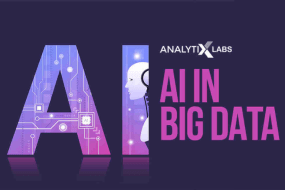
In today’s rapidly evolving digital landscape, financial technology—commonly known as fintech—has emerged as a transformative force reshaping how we interact with money and financial services.
Fintech refers to technology that seeks to improve and automate the delivery and use of financial services, helping companies, business owners, and consumers better manage their financial operations, processes, and lives.
The Evolution of Fintech
The history of fintech spans over a century, marked by significant technological innovations that have revolutionized the financial industry. While many consider fintech a recent phenomenon, its foundations date back to the late 19th century with the development of telegraph and transatlantic cable systems that transformed financial information transmission across borders.
The 1950s ushered in a new era with the introduction of the first universal credit card by Diners Club International in 1950, followed by American Express cards and BankAmericard (later Visa) in the late 1950s. The 1960s and 1970s marked the beginning of the shift from analog to digital finance, with Barclays introducing the world’s first ATM in London in 1967.
The dot-com era of the late 1990s and early 2000s represented another significant turning point. E-Trade became one of the first financial services companies to offer online trading to consumers in 1992, while PayPal, founded in 1998, demonstrated the viability of digital payment solutions.
The Current Fintech Landscape
Today, fintech encompasses a wide range of applications across various sectors of finance. As of July 2023, publicly traded fintechs represented a market capitalization of $550 billion, a two-times increase versus 2019. Additionally, there were more than 272 fintech unicorns with a combined valuation of $936 billion, a sevenfold increase from just five years ago.
The global fintech market is projected to reach almost $700 billion by 2030, demonstrating the sector’s tremendous growth potential. This expansion is driven by several factors, including rapid digitization, changing customer preferences, and increasing support from investors and regulators.
Key Categories of Fintech
The fintech ecosystem is diverse, with companies focusing on different aspects of financial services:
Digital Banks and Neobanks
These institutions provide online-only financial services without traditional physical branch networks, offering services such as checking and savings accounts, loans, and investment products—often with lower fees and better customer experiences.
Payment Solutions
This category includes companies facilitating money transfers and payments, ranging from mobile payment apps to complex business-to-business payment systems that enable simpler, faster transactions with improved tracking and security features.
Personal Finance Management (PFM)
PFM fintechs provide tools for individuals to manage their personal finances, including budgeting apps, financial tracking, and advisory services that help users optimize their spending, savings, and investments.
Insurtech
These technology-driven companies are transforming the insurance industry with simplified claims processing, policy management, and risk assessment, often using data analytics and machine learning to customize products to individual needs.
Wealthtech
Wealthtech firms focus on investment and wealth management services, using technology to offer automated investing advice, portfolio management, and retail investment platforms that expand access to previously restricted asset classes.
How Fintech Works
Fintech solutions typically incorporate several key features and functionalities that set them apart from traditional financial services:
User-Centric Interfaces
Fintech solutions prioritize user experience, providing intuitive, mobile-first interfaces that simplify complicated financial transactions and make financial management accessible to a broader audience.
Automated Services
Many fintech functions leverage automation through AI and machine learning to provide automated financial advice, personalized investment strategies, and automated loan underwriting, reducing manual intervention and making processes faster and more cost-effective.
Advanced Security Features
Fintech companies typically employ advanced security protocols such as biometric authentication, end-to-end encryption, and blockchain technology to ensure the security and integrity of financial transactions and data privacy.
Real-Time Processing
High-speed data processing technologies enable real-time payments, instant loan approvals, and live financial account updates, significantly improving the pace of financial operations.
The Impact of Fintech on Traditional Banking
The rise of fintech has profoundly impacted traditional banking in several ways:
Enhanced Efficiency
Innovative solutions using technologies such as artificial intelligence and blockchain have fundamentally changed traditional services. AI algorithms in mobile banking applications automate routine tasks, reducing time and minimizing errors, which helps raise operational excellence and customer satisfaction standards.
Expanded Access
Fintech is breaking down traditional barriers to financial services, making them accessible to anyone with an internet connection without requiring visits to brick-and-mortar banks. This shift is particularly important for people in remote or underserved regions.
Transformed User Experience
Processes that previously took days, such as applying for a mortgage or opening a new bank account, can now be completed in minutes through intuitive interfaces on smartphones or computers.
Reduced Costs
By leveraging technologies such as AI and cloud computing, fintech companies operate with lower overheads and can pass these savings on to customers through lower fees for transactions, maintenance, and other financial services.
The Future of Fintech
As we look toward the future, several trends are likely to shape the evolution of fintech:
Increased Integration with Other Sectors
Fintech is facilitating closer integration of financial services with other sectors such as retail, healthcare, and real estate, enabling smoother transactions and more personalized service delivery.
Focus on Financial Inclusion
Many fintech applications aim to serve disadvantaged or low-income individuals who are ignored or underserved by traditional banks or mainstream financial services companies, promoting financial inclusion.
Regulatory Evolution
As fintech continues to grow, regulatory frameworks are evolving to balance innovation with consumer protection and financial stability. Regtech, which seeks to help financial service firms meet industry compliance rules, is becoming increasingly important.
Continued Technological Innovation
Emerging technologies such as blockchain, artificial intelligence, and machine learning will continue to drive innovation in the fintech sector, creating new opportunities and challenges for financial services providers and consumers alike.
Conclusion
Fintech represents a paradigm shift in how financial services are delivered and consumed. By leveraging technology to create more efficient, accessible, and user-friendly financial products and services, fintech companies are reshaping the financial landscape and challenging traditional financial institutions to innovate and adapt. As technology continues to evolve and consumer expectations shift, the fintech revolution is likely to accelerate, bringing both opportunities and challenges for businesses and consumers in the years ahead.







